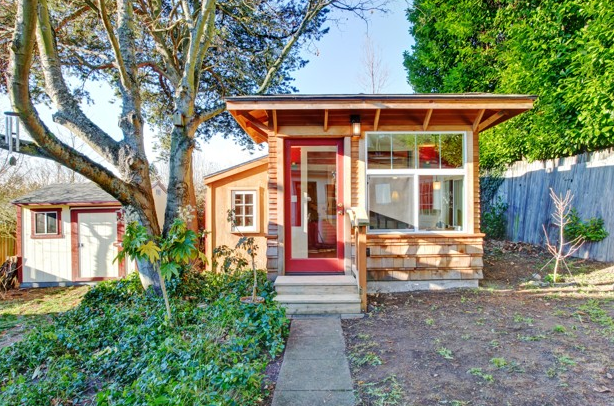Rise of the "Granny Unit"

In this tight real estate market there is a very clear housing shortage. This creates an opportunity for homeowners to add value by adding what is known as an accessory dwelling unit to their property. These units can be used for multigenerational living or as supplemental rental income. We’ll also take a look on the blog at (1) how much rental income you can make, (2) what the restrictions are for short term rentals versus long term rentals, and (3) the benefits of rental income from an investment property. But first, let’s take a look at ‘What is an ADU?’ Below is an overview of California legislation around the addition of these units. What is an ADU? The term accessory dwelling unit (ADU), otherwise known as a ‘granny’ or ‘in-law’ unit, refers to secondary dwelling units or a second unit in a single family or multifamily zone. ADUs offer a unique opportunity to address California’s housing needs and provide affordable housing options for family members, friends, students, the elderly, disabled, and many others. As of January 1, 2017, changes were made to the state’s ADU laws to further reduce barriers, streamline approval, and expand the capacity to accomodate their development. In doing so, the state law formalized the review and approval for second units. Meaning second units that comply with zoning regulations won’t be reviewed in a public hearing, and it will not be appealable. The application for the addition of an ADU unit be will reviewed as a simple permit that the County cannot deny, so long as the unit meets the planning and building codes. Major Bills You Should Know and What is Included in Them: SB 1069 (Wieckowski) Senate bill 1069 reduced parking requirements to one space per bedroom or unit. The legislation also authorized off street parking to be tandem or in setback areas, unless conditions such as fire and life safety issues are found. As you will note in the chart below on specific cities within the bay area, this bill prohibited parking requirements if the ADU is: Within a half mile from public transit Additional building codes such as fire sprinklers are also maintained so as not to hinder the addition of ADU units. If fire sprinklers are not required in the primary residence, then they are not required in an accessory unit. The provisions that apply to all single family residential zones and ADUs within existing space must be applied. Local governments are therefore prohibited from adopting an ordinance that would preclude ADUs. AB 2299 (Bloom) This ordinance states that an ADU can be rented, but is prohibited from being sold separately from the primary residence. The unit’s floor area has been increased so that it does not exceed 50% of the living area (habitable space) of the existing residence, with a maximum increase in floor area of 1,200 square feet. While following in compliance with local building code requirements, ADUs are additionally not required to have a passageway or include a setback if the ADU is converted from an existing garage. AB 2406 (Thurmond) Creating more flexibility for housing options, this bill permitted junior accessory dwelling units, or JADU. Compared to ADUs, JADUs are often smaller, as they cannot exceed 500 square feet and must be completely contained within the space of an existing residence. Because of their small size, JADUs may or may not include a personal bathroom or parking space, and limited kitchen facilities. Because JADUs are considered to be part of the single-family residence, fire and life protection ordinances and regulations are applied uniformly to all residences on the property. In many aspects, renting out a JADU is the same as renting a room in a private residence. For more detailed information on the changes to California’s ADU laws please check out: https://leginfo.legislature.ca.gov/faces/billTextClient.xhtml?bill_id=201520160SB1069 https://leginfo.legislature.ca.gov/faces/billNavClient.xhtml?bill_id=201520160AB2299 https://leginfo.legislature.ca.gov/faces/billNavClient.xhtml?bill_id=201520160AB2406
Within an architecturally and historically significant historic district
Part of an existing primary residence or an existing accessory structure
In an area where on-street parking permits are required, but not offered to the occupant of the ADU
Located within one block of a car share area
As a means to further prevent local agencies from creating a hardship for the addition of ADU units, they are prohibited from requiring ADU applicants to install a new or separate utility connection, when an ADU is contained within an existing residence or accessory structure. With regards to fees for the addition of an ADU unit, they must be proportionate and may not exceed the reasonable cost of providing service.
CALL KELLY FOR A SUMMARY OF LOCAL ADU REQUIREMENTS BY CITY


